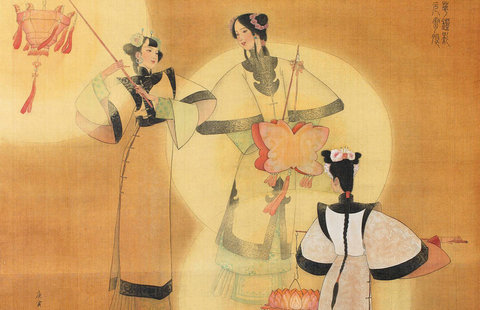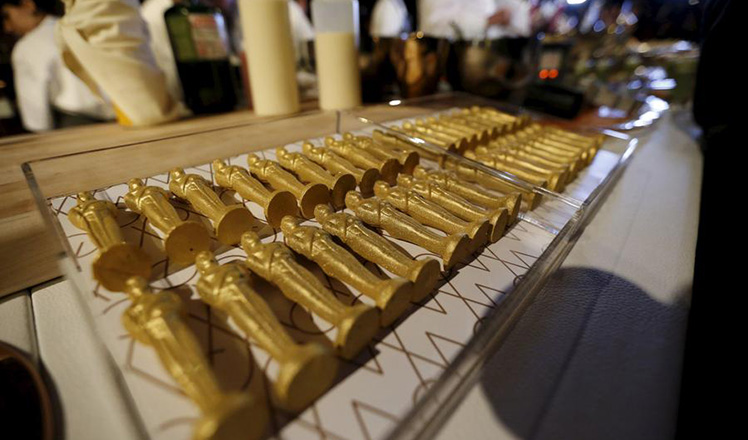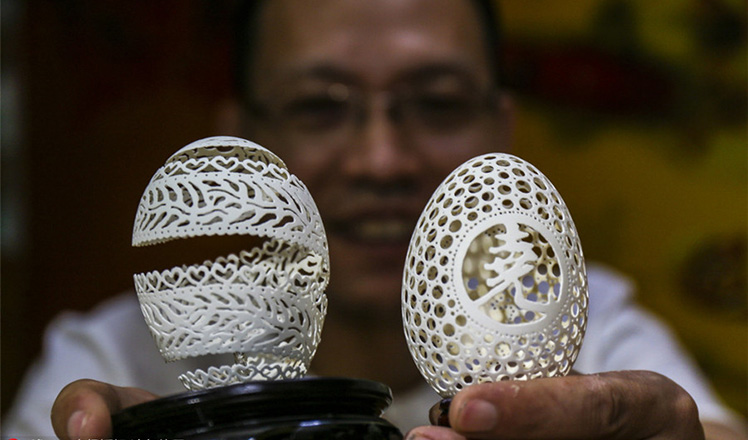Tea-time treasures
Updated: 2016-02-23 07:10
By Lin Qi(China Daily)
|
||||||||
 |
|
An ongoing exhibition, Graces of Song Wares, features ceramic, gold, silver, bronze and lacquer items from Hong Kong collector Mak Po-tai's trove. [Photo provided to China Daily] |
Mak's enthusiasm for the Song dynasty is not limited only to tea sets but extends to the philosophy of life of the Song people.
Through Mak's collection one gets a picture of how four leisure activities filled the lives of the Song people, who lived a thousand years ago, especially the shi da fu or the scholar-officials who formed the bedrock of the Song empire.
They engaged in the art of burning incense sticks, making tea, presenting paintings and arranging flowers, and his collection showcases the tools they used to carry out these activities to attain cultural refinement.
"People's lives were not only about studying and excelling in exams. They also needed time to learn musical instruments, calligraphy and painting and develop other interests," he says.
He adds that such a life philosophy endured in successive dynasties, too.
For example, people in the Ming Dynasty would keep an hour aside for sword fights before the tea appreciation party.
The tea sets Mak collects also show the different ways of preparing and drinking tea by different social ranks-from the nobility and scholar-bureaucrats to the working class.
He says though it seems that the ancient Chinese were easy-going, they were very focused and serious about their leisure activities.

 The world in photos: Feb 15 - 21
The world in photos: Feb 15 - 21
 China Daily weekly pictures: Feb 13-19
China Daily weekly pictures: Feb 13-19
 Lantern Festival in the Chinese paintings
Lantern Festival in the Chinese paintings
 Meet Melanie, the real-life mermaid
Meet Melanie, the real-life mermaid
 Samsung unveils new products at mobile conference in Spain
Samsung unveils new products at mobile conference in Spain
 88th Academy Awards Governors Ball Press Preview
88th Academy Awards Governors Ball Press Preview
 Chinese photographers' work shines in major photo contest
Chinese photographers' work shines in major photo contest
 Egg carving master challenges Guinness World Record
Egg carving master challenges Guinness World Record
Most Viewed
Editor's Picks

|

|

|

|

|

|
Today's Top News
What ends Jeb Bush's White House hopes
Investigation for Nicolas's campaign
Will US-ASEAN meeting be good for region?
Accentuate the positive in Sino-US relations
Dangerous games on peninsula will have no winner
National Art Museum showing 400 puppets in new exhibition
Finest Chinese porcelains expected to fetch over $28 million
Monkey portraits by Chinese ink painting masters
US Weekly

|

|








